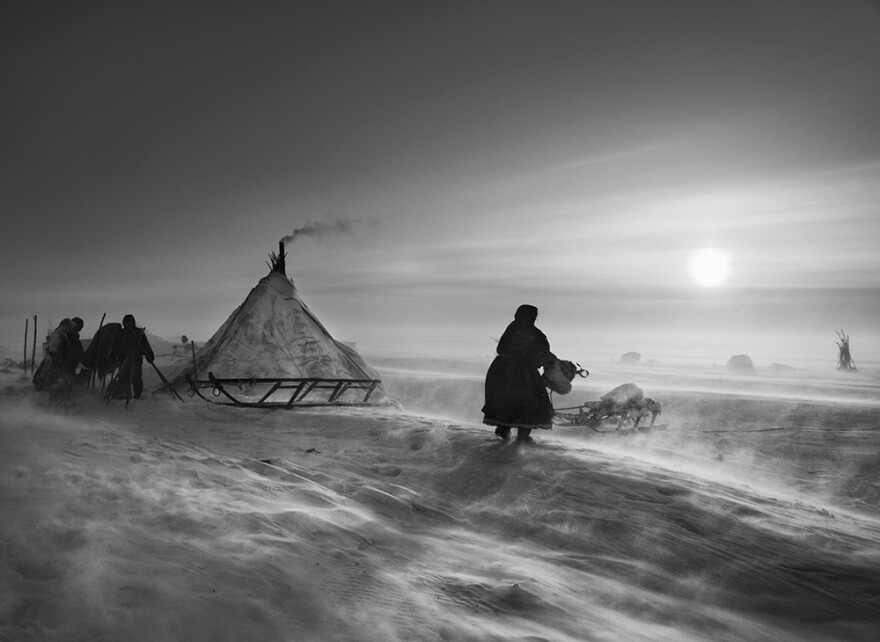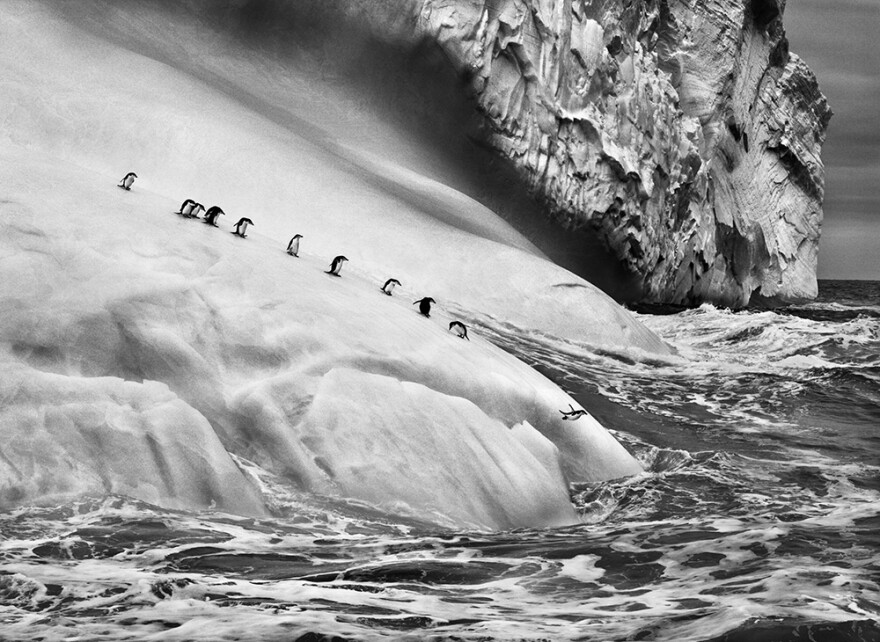



They're silvery and stunning — and their beauty bears a message.
"Genesis" is a new exhibit of more than 200 black-and-white images from the noted Brazilian photographer Sebastiao Salgado. He wants to show us what the world and its peoples look like now, how climate change has already had an impact — and what might be lost if Earth's climate continues changing.
His pictures will be on view at the International Center of Photography in New York City through Jan. 11. Goats and Soda is featuring four images that show parts of the world that our blog covers. We spoke with Salgado to learn more about his work.
What's your goal with this exhibit?
My issue was to see what we must preserve in this planet. Any photo I can take to convince the authorities, to convince the companies, to convince anyone, this is the minimum I can do. In this sense, I hope that these pictures, that this show, shows a kind of state of humanity of the planet, that we cannot destroy more than we already have.
What kinds of damage have you seen?
I was working in West Papua, Indonesia, with tribes that are living in the Stone Age. When I say that, I mean all of the instruments of their work, anything they have, are made from stone. Now [their] forest is getting destroyed [by man]. For me, that is the point: We are going too fast here. We must start to rebuild what we have destroyed.
We are doing this in Brazil. In part of the show, we are showing a rain forest that we planted in Brazil. We created an institution called Instituto Terra. We planted now more than 2 million trees of more than 300 different species, all local species. We must replant.
What about the health of the indigenous people you photograph? Have they suffered from climate change or from other changes?
I just worked now in March and April with a tribe in Brazil that suffered a lot from big diseases because gold diggers bring a lot of diseases that they [the indigenous groups] do not have.
Gold diggers use a lot of mercury. The fish eat the mercury. The people eat the fish, they become very sick. This is a big problem. We are seeing this happening in larger scale inside the Amazon. The National Indian Foundation fights to take the gold diggers out, but the region is so huge that it is difficult to take control.
We need much more participation. We have a conscience. And we must stop these things.
When you photograph your subjects, do they ask about your camera?
When you go to see this population, this isolated population, they are as smart as you and me. They are humans like we are. They are interested in my camera, but they are a hundred times more interested in my knife because this is something that they can use. My camera does not mean a thing to them.
They know what I am doing because each one has a sense of his own image.
They know when you are coming that you are doing something positive for them or something negative for them, if you are stealing something from them or if you are giving something back to them. It's like anyone else. If someone comes to your community here in New York, you know the way that he comes, if he is sincere or not. I come, I live months with these communities. I do not just come, take your pictures and go.
What are you working on now?
I'm working with the Indian movement in Brazil. They are in big danger with the advance of large-scale agriculture, and they are fighting very hard for their land. They have a sense [of] what happened to the Indians here [in the United States] and to the Indians in Canada, the way they live now in kind of refugee camps. They don't want to lose their soil.
What do you hope then to achieve with your work?
I hope these pictures can go into the secondary school, the university, to see if the next generation can come to power in Brazil with respect for the Indians and culture and territory. Because in Brazil, 13 percent of the territory is Indian territory. And Indian territory is green territory. By protecting this culture, we are protecting what is green.
What was the hardest photograph to make?
I have several. All from Siberia. I spent 47 days without showering. All the water materialized into ice. But the people are so nice. So that became my motivation.
This interview was edited and condensed for clarity.
Copyright 2021 NPR. To see more, visit https://www.npr.org.


